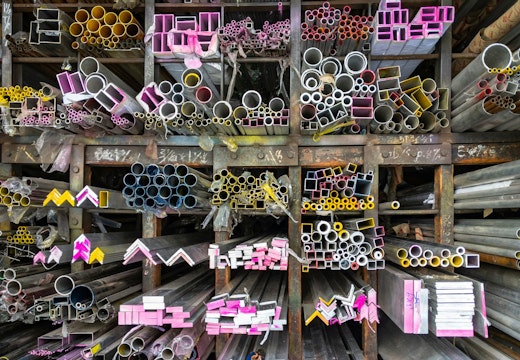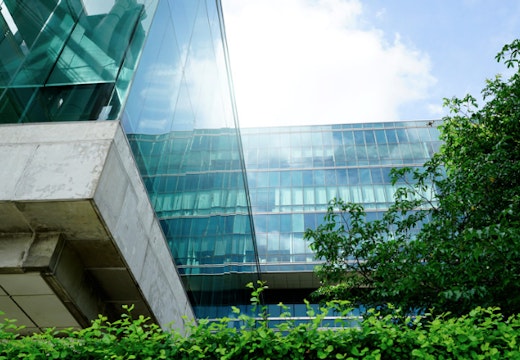Why smart lighting is pivotal to the retrofit revolution
Retrofitting commercial buildings will be critical to meet net zero targets and should be considered a strategic investment. In this article, Fagerhult looks at the key role of lighting in energy performance
A recent MACE report highlights the critical role of retrofitting existing commercial buildings in reducing emissions and minimising waste. The construction and consultancy company emphasises that a failure to transition from extensive new constructions could lead to buildings becoming obstacles to our environmental progress.
With the UK aiming for its 2050 ‘Net Zero’ goal, retrofitting emerges as a prudent and essential step toward fostering greener urban areas.
What are the implications?
Retrofitting, at its core, involves integrating new features or technologies into existing buildings, systems or infrastructure to improve functionality and performance. The scale can range from simple refits with minor modifications – such as incorporating energy-efficient windows and upgrading lighting – to substantial building overhauls involving stripping a building back to its shell and starting again, with a whole new interior and a complete revamp of insulation, HVAC systems and more.
For building owners, retrofitting offers great potential for reducing the environmental footprint of their assets, and the ongoing operational costs.
New construction, as we know it, requires an extensive range of resources – from materials to energy, and from transport to logistics – and it’s a significant contributor to global carbon emissions. Add to that the immense waste generated during the process itself, and it’s clear to see that renovation – wherever possible – is a more responsible alternative.
An investment that pays
Retrofitting, although requiring an initial outlay, is undeniably a worthy investment when viewed through the lens of long-term cost implications too. The knee-jerk reaction to retrofitting often revolves around the upfront costs, which can be considerable depending on scope. However, this perspective overlooks the considerable economic benefits that retrofitting presents over the long run.
Energy-efficient modifications, such as bolstering insulation, implementing advanced HVAC systems, and integrating efficient, smart lighting solutions, can drastically reduce energy consumption. For instance, modern lighting systems are up to 80 per cent more efficient than traditional ones, contributing significantly to energy savings.
Over the lifespan of a building, these adaptations not only curtail energy use but also translate into significant cost savings on utility and maintenance bills. Energy-efficient upgrades reduce the demand on HVAC systems, prolonging their life and thereby saving on equipment replacement costs.
It is, therefore, prudent to view retrofitting as a strategic investment that delivers substantial returns over time.
Drive towards energy efficiency
The discussion around retrofitting cannot be complete without a clear focus on Energy Performance Certificates (EPCs).
EPCs rate a building’s energy efficiency, providing a metric for its performance and environmental impact. The certification considers various parameters, including thermal characteristics, heating and cooling systems, ventilation, and lighting. This estimated performance is represented as a rating, ranging from ‘A’ for the most efficient to ‘G’ for the least.
An ambitious legislative target in the UK has been set, requiring commercial buildings to achieve an EPC B rating by 2030. This is a considerable leap from the current median EPC rating of ‘D’ for non-domestic buildings. Achieving this target would imply significant reductions in energy consumption and carbon emissions, contributing to the broader environmental sustainability goals.
Given this backdrop, attaining improved EPC ratings is an effective strategy. Measures aimed at reducing energy usage and enhancing overall efficiency – such as improving insulation, upgrading heating and cooling systems, and incorporating energy-efficient lighting – can drastically improve a building’s EPC rating.
Alongside the mandate for better EPC ratings, retrofitting also finds relevance in another crucial aspect of today’s built environment: wellness certification. A noteworthy example is the WELL Building Standard, an internationally recognised rating system focusing on features enhancing occupants’ health and well-being.
Under the WELL Building Standard, buildings are assessed on several wellness features – air and water quality, nourishment, light, fitness, comfort, and mind. Retrofitting can significantly contribute to achieving high ratings in these categories.
Energy consumption
Often overlooked yet critical to retrofitting is the domain of lighting. As a substantial contributor to a building’s energy usage, lighting can significantly sway a building’s EPC rating.
Companies like Fagerhult have been spearheading efficient lighting solutions that emphasise energy efficiency and occupant comfort. One such innovation is Organic Response—a pioneering, energy-saving lighting control solution.
Organic Response intuitively responds to occupant behaviour, harnessing the power of distributed intelligence to create responsive, energy-efficient lighting environments. Each Organic Response-enabled light source is equipped with sensor technology that detects occupancy and ambient light levels, adjusting output to provide optimal illumination while minimising energy use. As an occupant moves through a space, the lighting ahead is prepared, creating a personal sphere of light that moves with them, and dimming in areas that are no longer occupied.
Organic Response is a wireless plug-and-play system, with sensors directly integrated into the luminaire, which just needs connecting to the mains for the system to start running, making it a particularly compelling solution for retrofit projects.
The holistic benefits
The drive towards retrofitting isn’t just about environmental sustainability or cost savings though. It’s also about creating healthier and more comfortable spaces for those who inhabit them. By optimising core building features – air quality, noise levels, lighting – it’s possible to enhance occupant wellbeing and productivity significantly.
‘Retrofitting presents an effective, sustainable choice which offers environmental, cost, and health benefits…’
We believe retrofitting presents an effective, sustainable choice for commercial premises, offering environmental, cost, and health benefits. Its potential to conserve resources, reduce waste, and improve the wellness of inhabitants marks it as a critical solution to the environmental and health challenges we face.
Businesses must understand the holistic benefits of retrofitting and consider integrating it into their operational and sustainability strategies. As we progress towards a more sustainable future, sustainable, smart lighting solutions remain pivotal in this transition.








